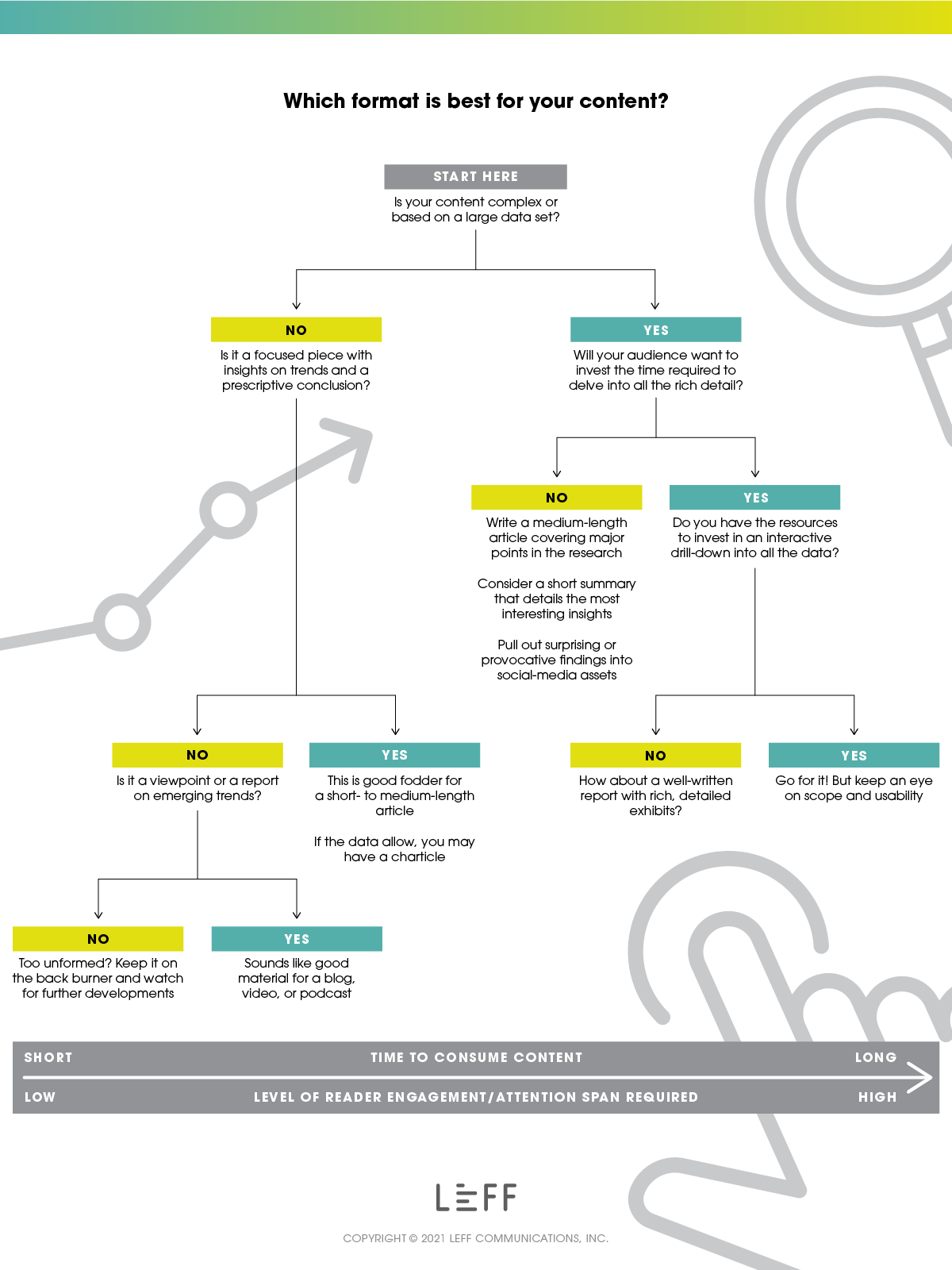This piece is a collaborative effort by Luke Collins and Mary Reddy.
The good news? People are spending more and more time on digital content. The bad news? The amount of content competing for their attention just keeps growing. Grabbing someone’s attention, then, requires taking a cue from the trend toward personalization and shaping your content to the audience most likely to find it useful.
But what format do you reach for? Maybe you’ve heard video infographics are the next big thing. Or you want to enhance your image by producing a cutting-edge mixed-media story. There’s nothing inherently wrong with stretching into new formats, but the tried-and-true approach still holds: start with the content, then consider what format works best given the target audience. When deciding on formats, we assess material based on two factors: Is it simple or complex? And, loosely tracking that, how much time and attention will it require from the user, ranging from a little to a lot?
Our decision tree below traces paths toward different content formats. Of course, it’s neither exhaustive nor mutually exclusive. But you get the idea: following a drill-down format selection process based on the nature of your content and its likely audience will help get your content to the people you want, when they want it, in the format they’re most likely to consume.





Leave a Reply
You must be logged in to post a comment.